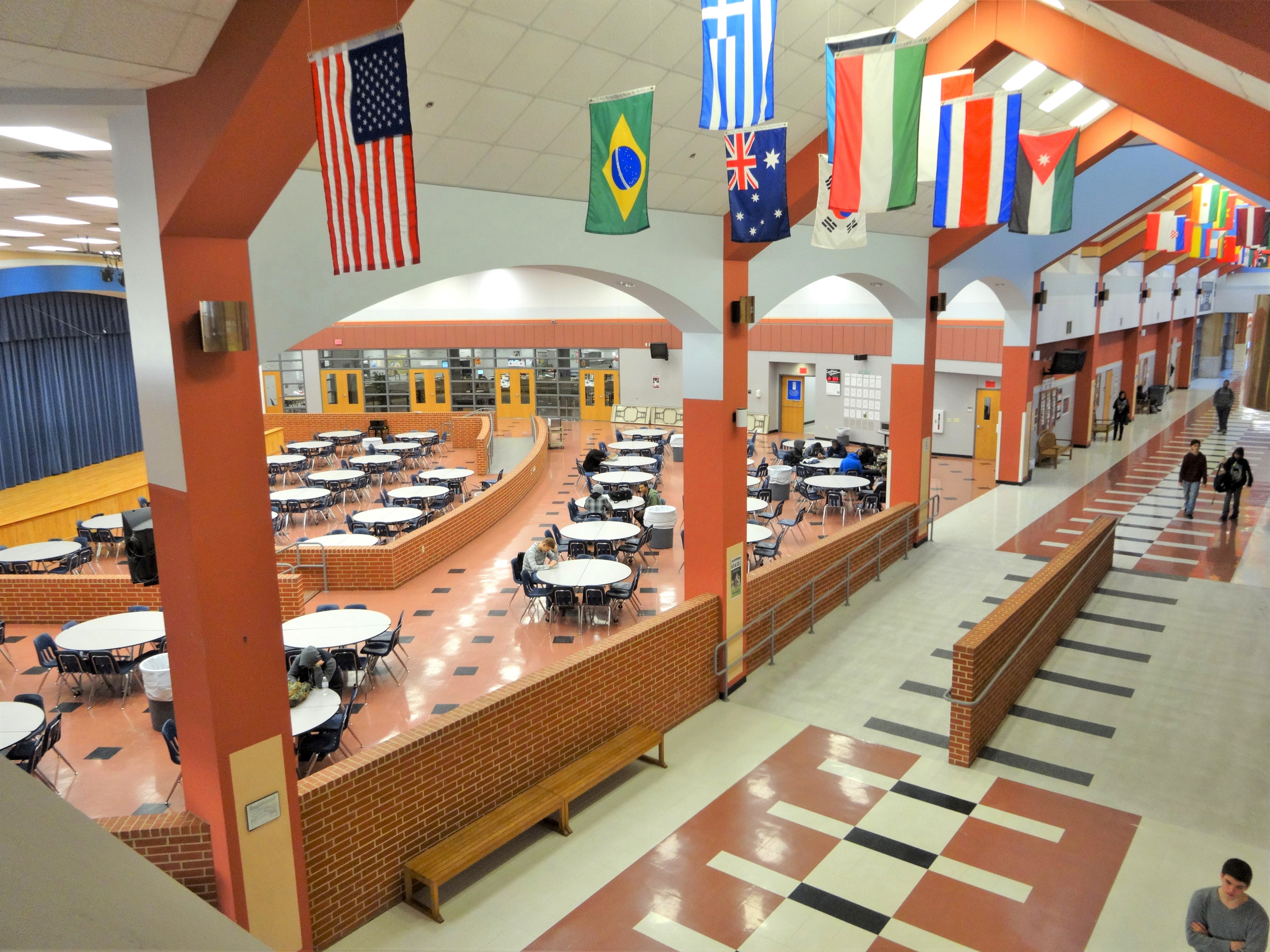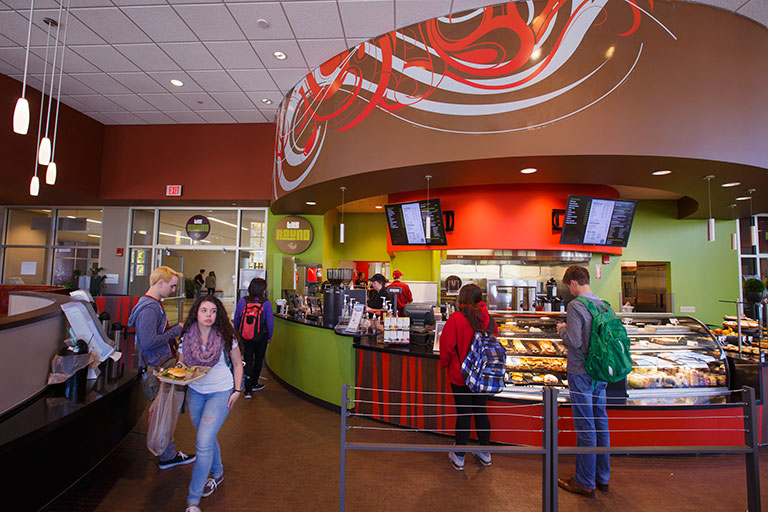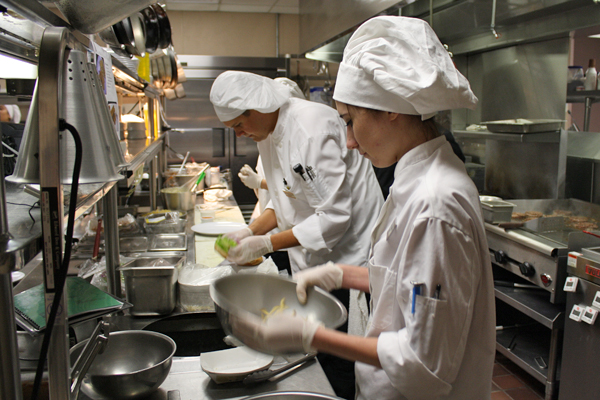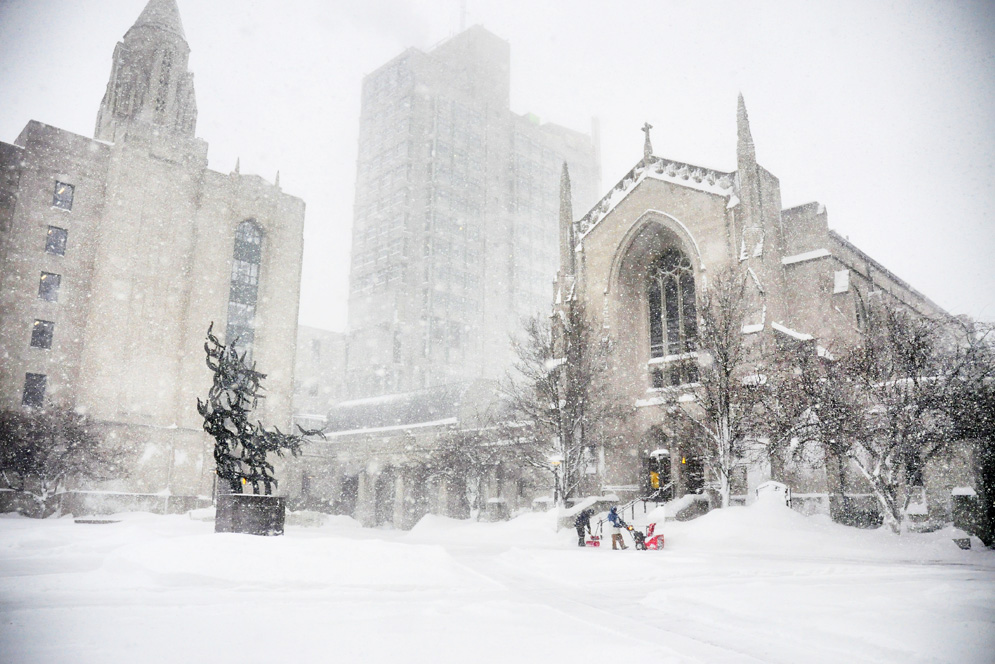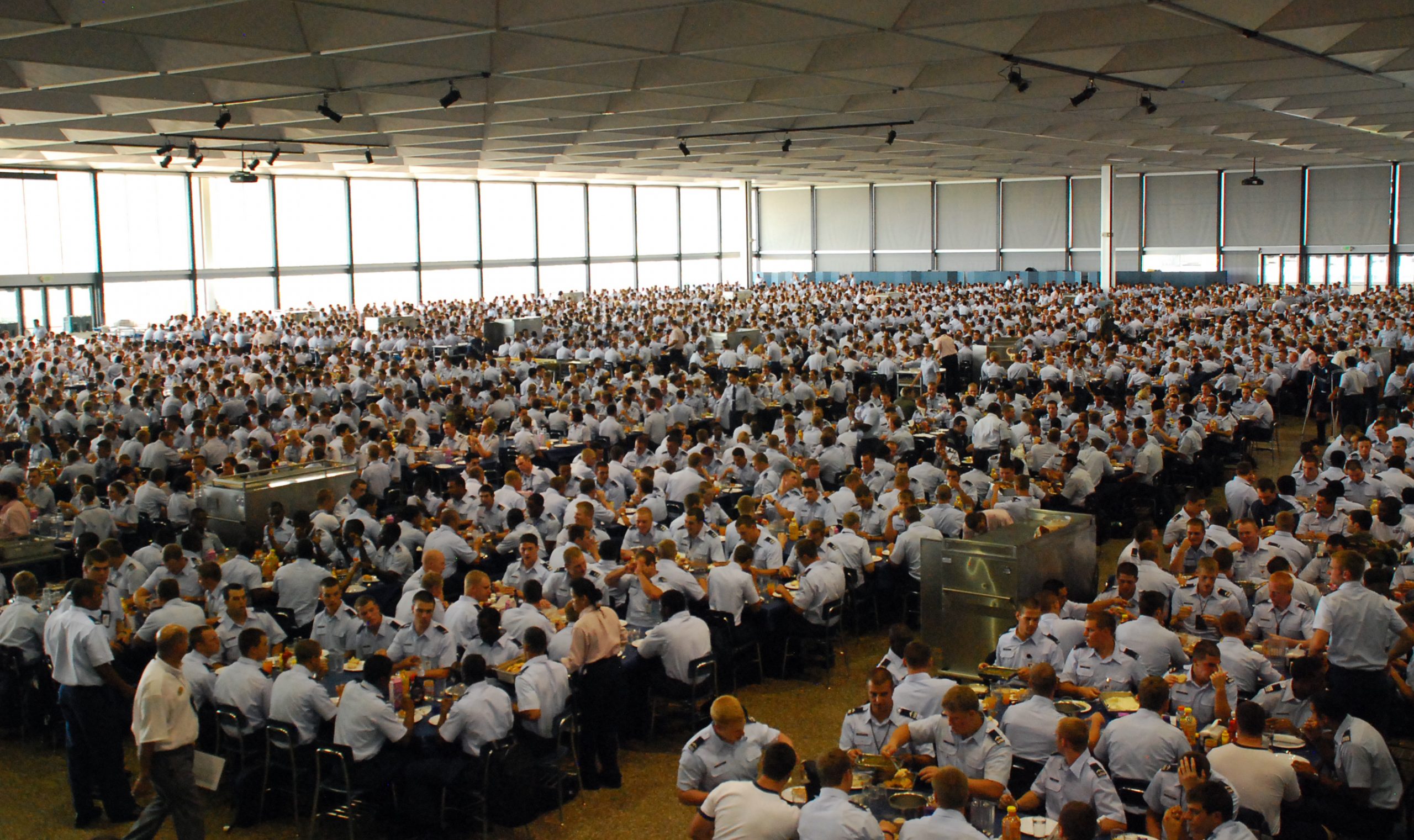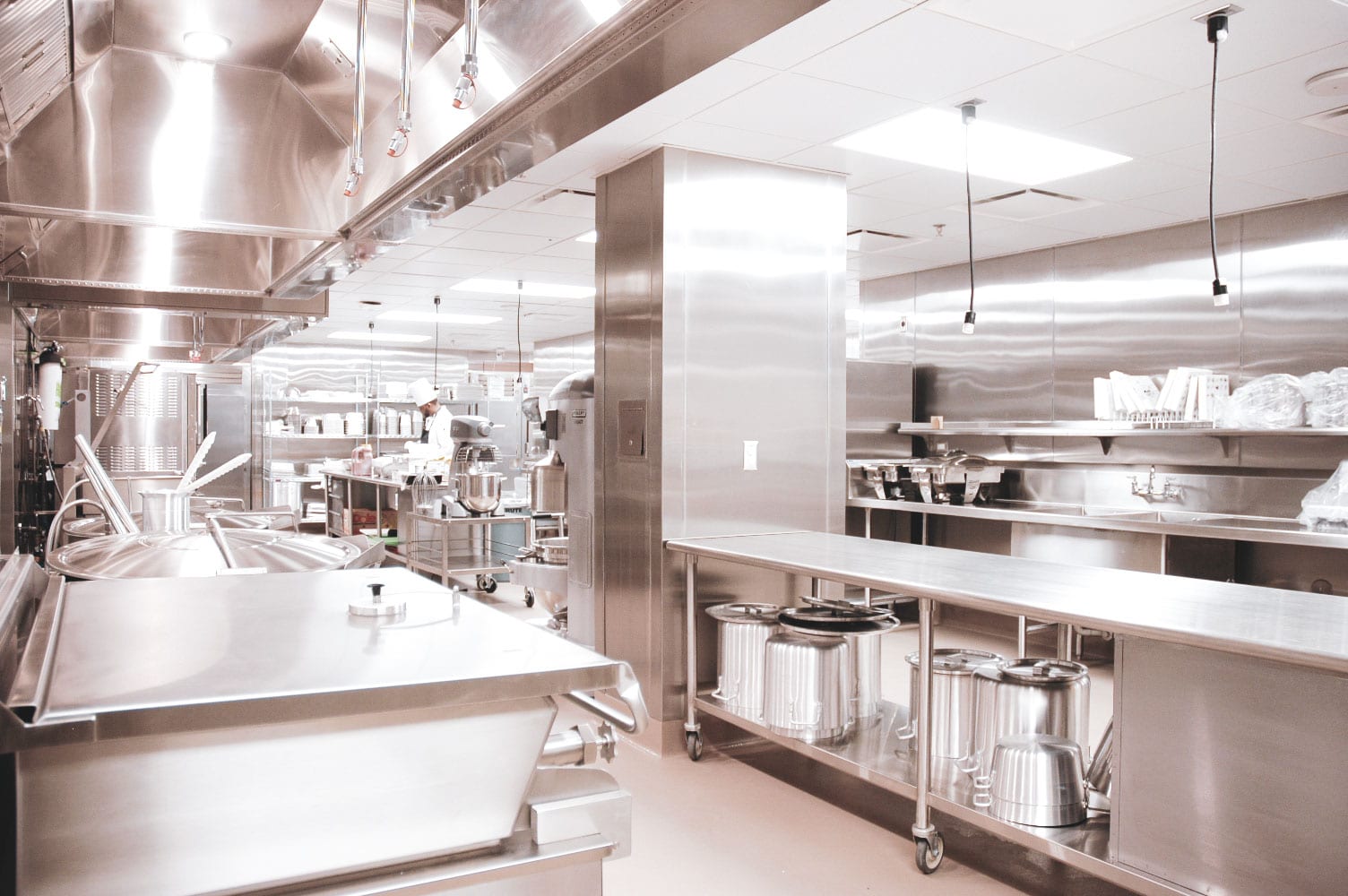Category Archives: Kitchen
- Home
- Archive by category "Kitchen"

Food Safety
Education communities have significant food safety responsibilities. Risk gets pushed around global food service counterparties; a drama in itself and one that requires coverage in a separate blog post.*
Since 2013 we have been following the development of food safety standards; among them ANSI/NSF 2: Food Equipment one of a constellation of NSF food safety titles whose provisions cover bakery, cafeteria, kitchen, and pantry units and other food handling and processing equipment such as tables and components, counters, hoods, shelves, and sinks. The purpose of this Standard is to establish minimum food protection and sanitation requirements for the materials, design, fabrication, construction, and performance of food handling and processing equipment.
It is a relatively stable standard; developed to support conformance revenue for products. A new landing page seems to have emerged in recent months:
https://www.nsf.org/testing/food
Manufacturers are required to meet the NEC and CEC electrical codes to have their food equipment sold and used in the United States and Canada. Watch our video for more details. pic.twitter.com/d0vUf4zUl2
— NSF (@NSF_Intl) June 30, 2023
You may be enlightened by the concepts running through this standard as can be seen on a past, pre-pandemic agenda:
NSF 2 Food Safety 2019 Meeting Packet – Final Draft
NSF 2 Food Safety 2019 Meeting Summary – August 21-22 Ann Arbor NSF Headquarters
NSF 2 Food Equipment Fabrication Agenda – FEF – TG – 2021-01-12
Not trivial agendas with concepts that cut across several disciplines involving product manufacture, installation, operation and maintenance. We find a very strong influence of organizations such as Aramark and Sodexo. More on that in a separate post.
From https://t.co/CW9veo96yh: Food Equipment Standards https://t.co/ZwBF9Yr5s0
— Standards Michigan (@StandardsMich) September 19, 2025
This committee – along with several other joint committees –meets frequently online. If you wish to participate, and receive access to documents that explain the scope and scale of NSF food safety standards, please contact Allan Rose, (734) 827-3817, arose@nsf.org. NSF International welcomes guests/observers to nearly all of its standards-setting technical committees. We expect another online meeting hosted by this committee any day now.
Keep in mind that all NSF International titles are on the standing agenda of our Nourriture (Food) colloquia; open to everyone. See our CALENDAR for the next meeting.
Issue: [13-113] [15-126]
Category: Facility Asset Management, Healthcare, Residence Hall, Athletics
Colleagues: Mike Anthony, Tracey Artley, Keith Koster, Richard Robben
LEARN MORE:
ANSI Blog | Changes to NSF 2 Food Safety Equipment Standard
NSF International Food Safety 2018 Meeting Summary – 2018-08-22 – Final Draft
2017 Food Code | US Food & Drug Administration
Hygiene Requirements For The Design Of Meat And Poultry Processing Equipment
Kitchen Wiring
This content is accessible to paid subscribers. To view it please enter your password below or send mike@standardsmichigan.com a request for subscription details.
Spring Salad
Do you want a fresh and healthy meal, but don’t have time to sit down? Look no further than North and South Dining Hall Grab and Gos!
Don’t forget to try one of the salads, they are our favorite! 🥗 pic.twitter.com/d833XeTnRq
— Campus Dining (@NDCampusDining) January 25, 2024
Kitchen Wiring
Education communities are stewards of hundreds of commercial-class kitchens in which the proximate risk of electrical energy must be managed — water spills and grease, fires, worn electrical cords on countertop equipment, faulty wiring or equipment, damaged outlets or connectors, and improperly used or damaged extension cords among them. The safety and sustainability rules for this occupancy class is identified as Assembly Group A-2 in Section 303 of the International Building Code
We explore recent transcripts of expert committee activity in NEC Article 210 and provide links to video commentary.
Public comment on the Second Draft of the 2026 NEC will be received until April 18. We typically coordinate our effort with the IEEE Education & Healthcare Facilities Committee. The workspace set up for generating proposals can be found in the link below.
2023 National Electrical Code (Free Access)
Other access portals:
Michigan Electrical Code: Part 8 Rules
Transcripts of the 2023 NEC are linked below:
We examine transcripts to track technical specifics that apply to student accommodation kitchens (on and off campus), university-affiliated hospital kitchens and sport arenas.
Relevant Research:
Smart Kitchen: Real Time Monitoring of Kitchen through IoT
Design of Chinese Smart Kitchen Based on Users’ Behavior
Intelligent kitchen management system based on gas safety
A Futuristic Kitchen Assistant – Powered by Artificial Intelligence and Robotics
A Multi-radar Architecture for Human Activity Recognition in Indoor Kitchen Environments
Commercial Kitchens
2025 GROUP B PROPOSED CHANGES TO THE I-CODES: Complete Monograph (2630 pages)
36 kitchen related proposals will be reviewed today
2024 GROUP A PROPOSED CHANGES TO THE I-CODES: Complete Monograph (2658 pages)
Commercial kitchens offer several benefits, such as efficient food preparation and large-scale production, allowing businesses to meet high demand. They provide professional-grade equipment and ample space, enabling chefs to explore culinary creativity. Commercial kitchens also promote hygiene and food safety standards, with dedicated cleaning protocols and inspections. However, hazards can arise from the high-temperature cooking equipment, sharp tools, and potentially hazardous substances. There is also a risk of burns, slips, and falls, emphasizing the importance of proper training and safety measures. Adequate ventilation and fire safety systems are vital to prevent accidents and maintain a healthy working environment.
The International Code Council is re-configuring its code development process in nearly every dimension. While that situation stabilizes let us review the back-and-forth on this topic during the previous revision cycle (linked below):
2021 International Building Code Section 306 Factory Group F Moderate Hazard
2021 International Fire Code Section 606 Commercial Cooking Equipment and Systems
The International Code Council has recently re-configured its code development calendar:
2024/2025/2026 ICC CODE DEVELOPMENT SCHEDULE
Public hearings on the proposed changes happen in Orlando, April 7-16.
This is a summary of the actions taken on the 2024 Comments on Proposed Changes to the ICC International Codes at the October 23-28, 2024 Committee Action Hearings #2 held at the Long Beach Convention Center, Long Beach, California. Balloting of local building code officials is now underway.
Commercial kitchen electrical power wiring requirements are covered extensively in Article 210 through Article 215 of the National Electrical Code. Standards action in this domain is referred to IEEE Education & Healthcare Facility Committee.
ASHRAE International: Calculating Airflow Rates, Cooking Loads in Commercial Kitchens
Related
International Mechanical Code: Chapter 10 Boilers, Water Heaters and Pressure Vessels
AGA Response to The Atlantic Article about Natural Gas Cooking
Thomas Edison State University: Undergraduate Certificate in Gas Distribution
History of the Kitchen
• In ancient times, kitchens were often located outside the main living quarters of a home. They were typically small, with an open hearth for cooking and a few basic utensils.
• During the Middle Ages, kitchens began to be built inside castles and manor houses. These kitchens were much larger and more complex than earlier versions, with multiple hearths, ovens, and cooking utensils.
• During the Renaissance, kitchens continued to become more elaborate, with the development of specialized cooking tools and the introduction of new cooking techniques. The kitchen also became a central gathering place for the household.
• With the onset of the Industrial Revolution, kitchens began to incorporate new technologies, such as gas stoves and refrigeration. As more people moved into cities, smaller kitchens became the norm.
• In the 20th century, the design and functionality of kitchens continued to evolve. The introduction of electricity and new materials, such as stainless steel, allowed for more efficient and hygienic kitchens. Open-plan kitchens, where the kitchen is integrated with the living and dining areas, also became popular.
Kitchens 300
Commercial kitchens in school cafeterias and college dormitories are designed to meet strict health and safety standards, accommodate high-volume food production, and provide nutritious meals to students in an efficient and organized manner. Some common features:
- Industrial-grade cooking equipment: This may include commercial ovens, grills, ranges, fryers, steamers, and other specialized cooking equipment designed for high-volume cooking.
- Food preparation areas: These may include spacious prep tables, cutting boards, sinks, and other food preparation stations for washing, chopping, and assembling ingredients.
- Walk-in refrigerators and freezers: These are used for storing large quantities of perishable food items at appropriate temperatures to maintain freshness and safety.
- Food storage facilities: These may include shelves, racks, and cabinets for storing dry goods, canned goods, and other non-perishable food items.
- Dishwashing area: This may include commercial dishwashers capable of handling a large number of dishes and utensils efficiently.
- Serving stations: These may include counters, warming stations, and other facilities for serving food to students.
- Ventilation and exhaust systems: These are essential for maintaining a clean and safe kitchen environment by properly removing smoke, steam, and odors generated during cooking.
- Safety features: These may include fire suppression systems, emergency exits, and other safety measures to ensure compliance with local health and safety regulations.
Owing to the complexity of the domain, starting 2023 we will break down the standards for education community safety and sustainability into two separate colloquia:
Kitchens 100 will deal primarily safety — fire, shock hazard, sanitation, floors, etc.
Kitchens 300 will deal with sustainability criteria in large commercial kitchens common in school cafeterias, dormitories, sports venues and hospitals.
Owing to the complexity of the domain, starting 2023 we will break down the standards for education community safety and sustainability into two separate colloquia:
Kitchens 100 will deal primarily safety — fire, shock hazard, sanitation, floors, etc.
Kitchens 300 will deal with sustainability criteria in large commercial kitchens common in school cafeterias, dormitories, sports venues and hospitals.
Relevant catalogs:
3-A Sanitary Standards
AGA Response to The Atlantic Article about Natural Gas Cooking
ASHRAE International
Ventilation for Commercial Cooking Operations
ASTM International
Institute of Electrical and Electronic Engineers
Noteworthy Research:
Design Application of Smart Kitchen for Aging Based on Interactive Behavior Analysis
A Futuristic Kitchen Assistant – Powered by Artificial Intelligence and Robotics
Environmental analyses of waste cooking oil recycling and complete use practices in Bogor, Indonesia
IAPMO International
Prefabricated Gravity Grease Interceptors
International Code Council
International Building Code Sections 303 Commercial Kitchens
National Fire Protection Association
National Electrical Code
Standard for the Installation of Air-Conditioning and Ventilating Systems
The Association for Packaging and Processing Technologies
We will also review federal and state-level regulatory action. Open to everyone. Use the login credentials at the upper right of our home page.
Related:
New update alert! The 2022 update to the Trademark Assignment Dataset is now available online. Find 1.29 million trademark assignments, involving 2.28 million unique trademark properties issued by the USPTO between March 1952 and January 2023: https://t.co/njrDAbSpwB pic.twitter.com/GkAXrHoQ9T
— USPTO (@uspto) July 13, 2023
Standards Michigan Group, LLC
2723 South State Street | Suite 150
Ann Arbor, MI 48104 USA
888-746-3670





